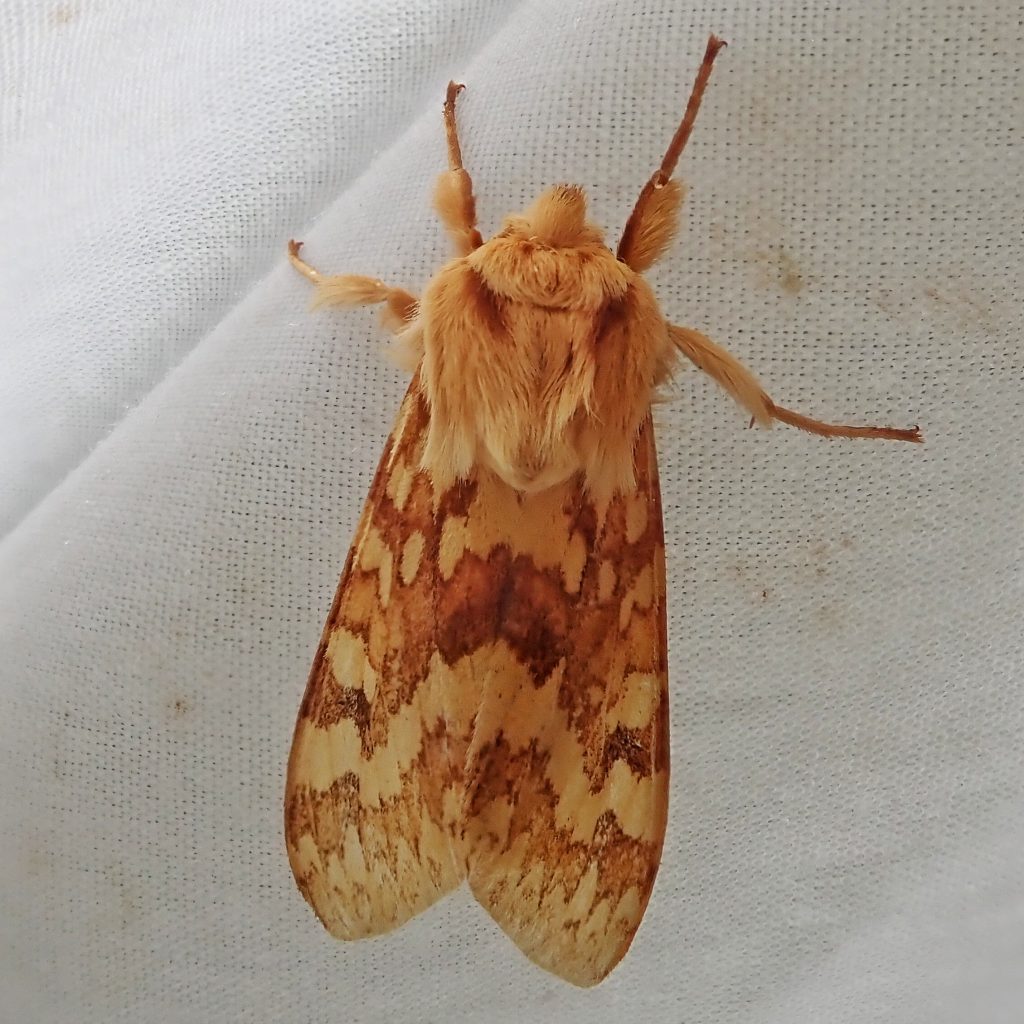
One of the unexpected pleasures of having this website has been meeting people I otherwise wouldn’t have known. Such is the case with Kelly and Bev Rupp. I first met Kelly when he asked me to do a presentation to their Master Gardeners Society. And even after I fumbled my way through that they were kind enough to invite Pam and I to visit them and stay in their guesthouse while we explored their undeveloped property alongside Willapa Bay.
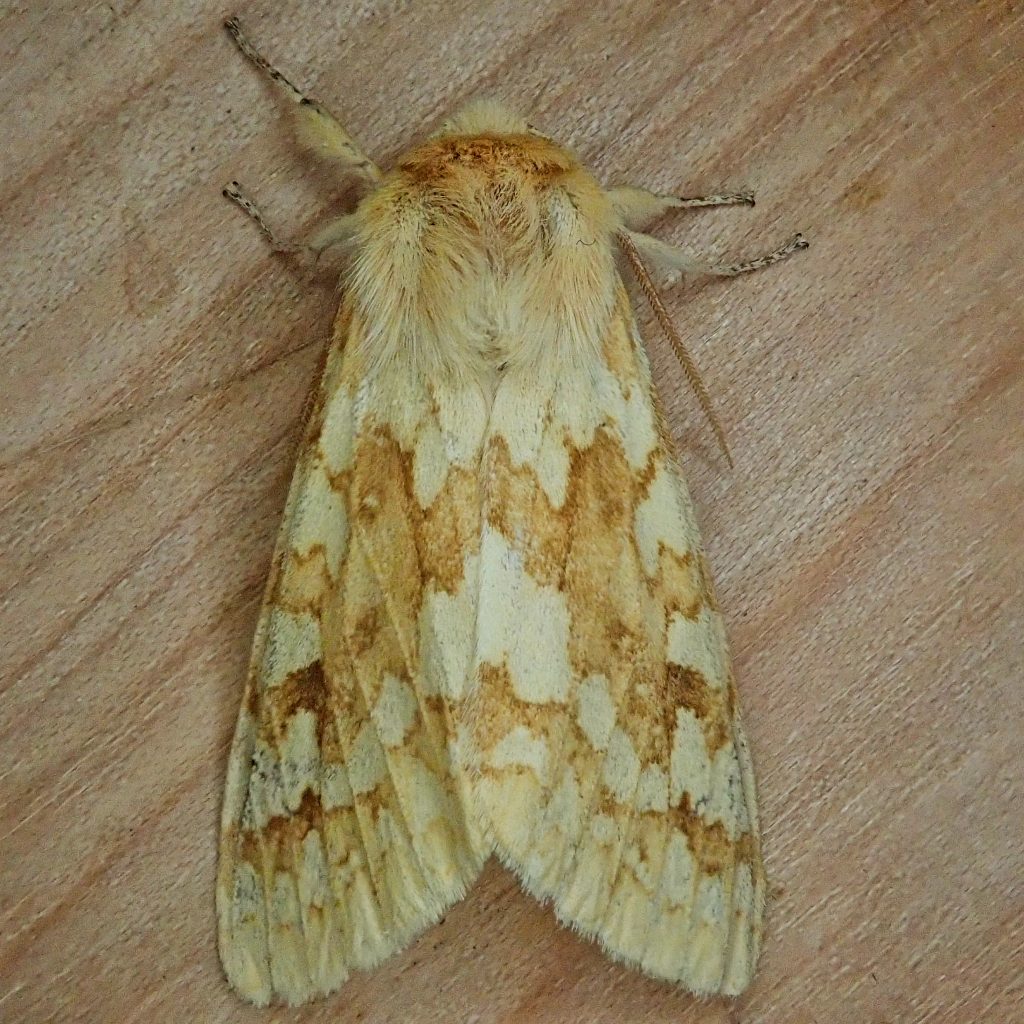
Unfortunately, due to general wimpiness on my part, inclement weather, and clouds of aggressive mosquitoes, my exploration was confined mostly to checking out the arrivals at the bird feeders, and running lights at night. But I still managed to find and photograph a few dozen species which I have yet to profile, so I’ll be sharing them in the coming days. And, gracious hosts (and generally just really good human beings) that they are, they invited us to come back whenever we can, an offer we will take advantage of sooner rather than later.

The first lifeform from there I would like to talk about is Lophocampa maculata. These beautiful moths are in the family Erebidae (tiger moths), which contains the so called wooly bear caterpillars. Even though they are called tussock moths, Spotted Tussock Moths are not ‘true ‘ tussock moths, which are in the family Lymantriidae. However, and contrary to some information out there, the caterpillars of Lophocampa maculata do have substances on their sharp hairs that can cause urticaria, or hives. And, for those with great sensitivity to those substances (a sensitivity which can be induced by repeated exposure), the severe allergic reaction called anaphylaxis can result, as documented here.
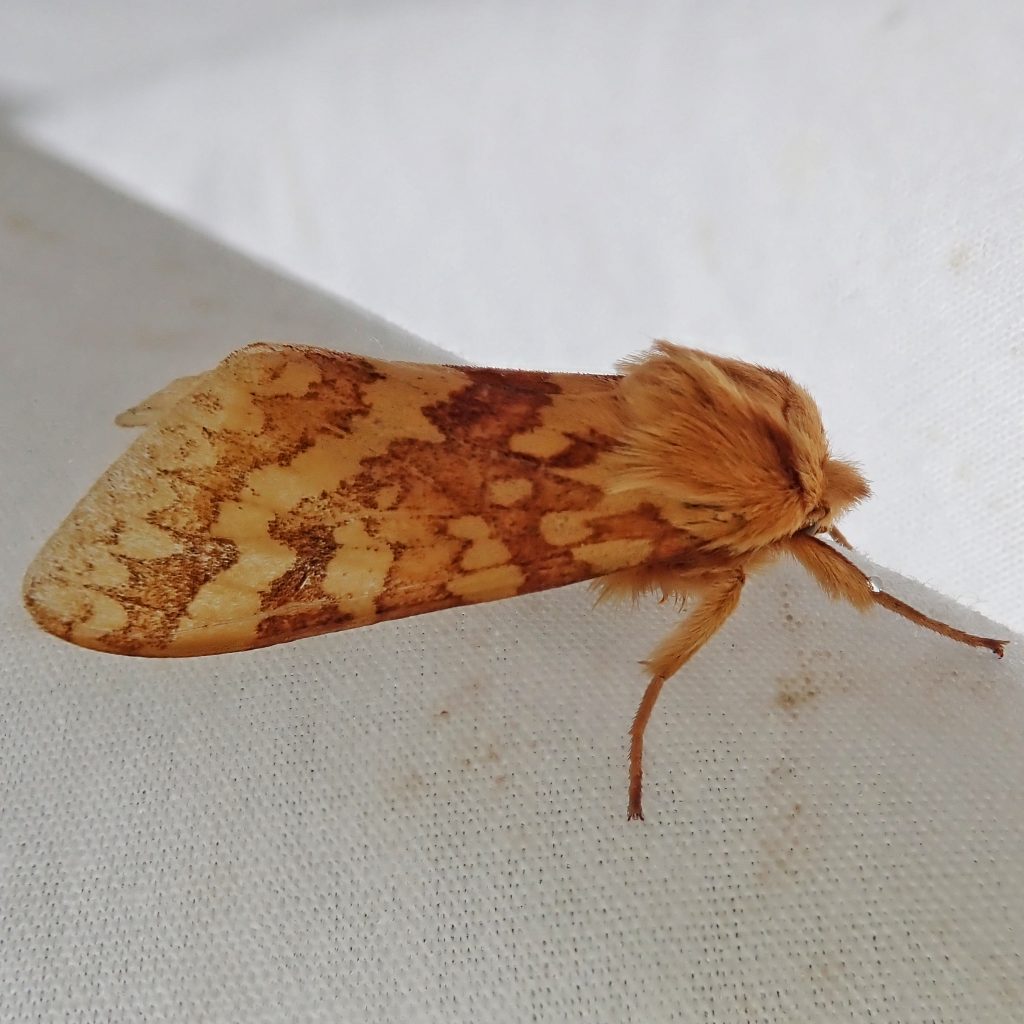
Description-Medium sized (fw length 20-24mm) tan to brown moth with light yellow, angular spots; head and thorax yellowish tan; hindwing unmarked light yellow.
Similar species–L. argentata is dark reddish brown with white spots.
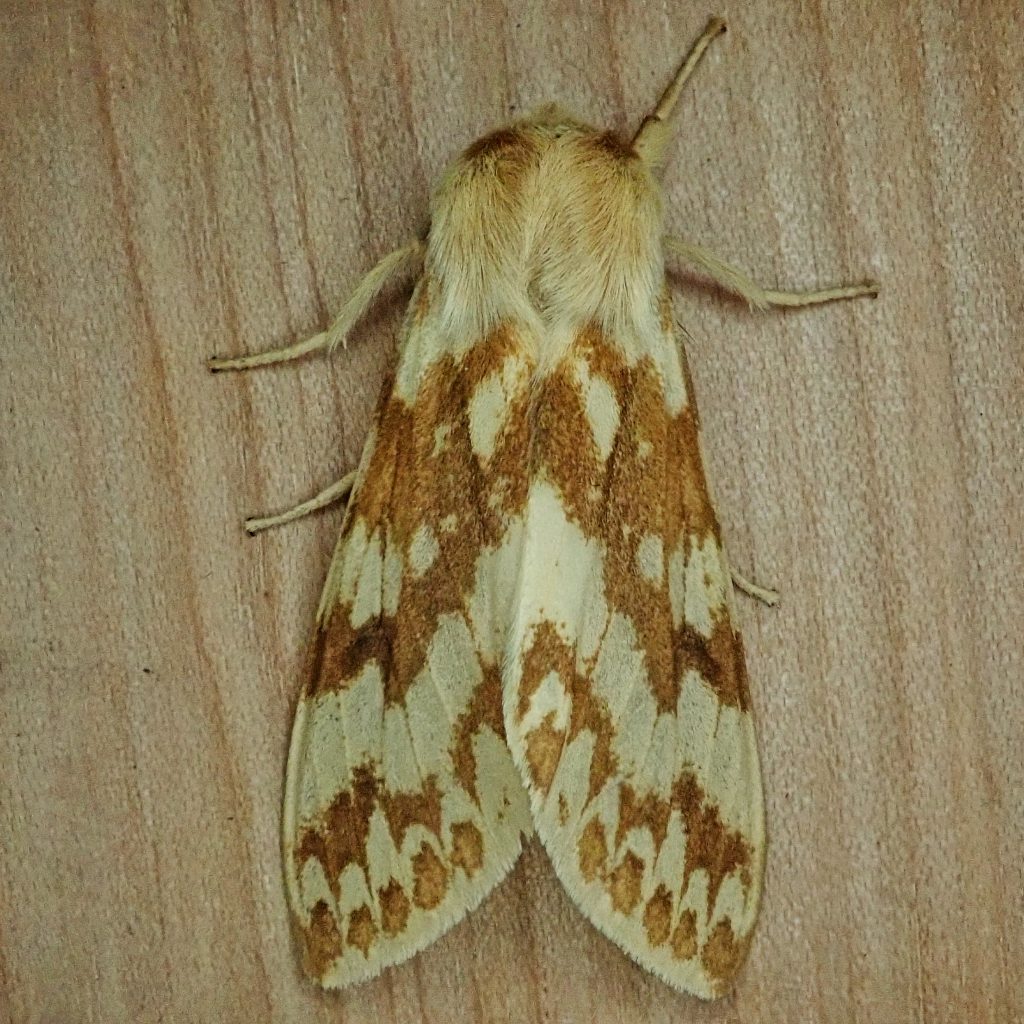
Habitat– Deciduous and mixed forests and woodlands and riparian corridors.
Range-Northern North America; region wide in appropriate habitat.
Eats-Larvae are generalists and feed on maples, oaks, alders, birches, willows, cottonwoods, cherries, and other deciduous trees and shrubs.
Eaten by– Not many things twice; said to be acrid to taste; caterpillars have aposematic (warning) coloration , and larvae and adults are said to emit clicks, which either warn bats of their distastefulness or interfere with their echolocation.
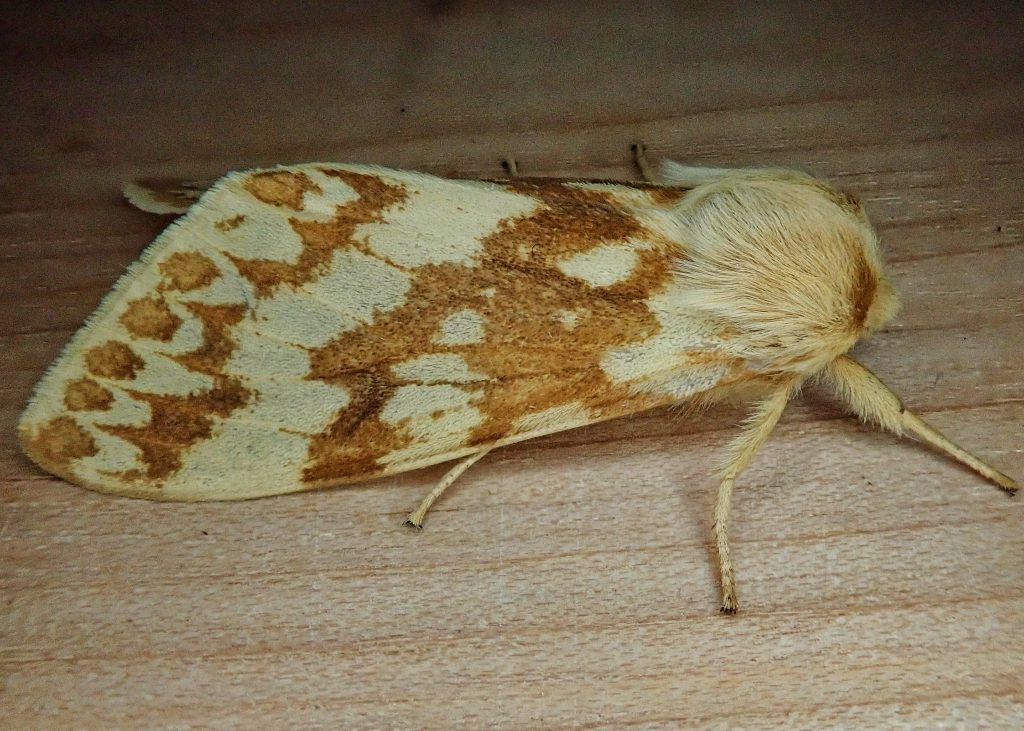
Reproduction-Univoltine in our region; presumed to overwinter as pupae in diapause.
Adults active-Mid April to mid August, with a peak in June and July
Etymology of names–Lophocampa is from the Greek for ‘crested caterpillar’, which refers to the tufts of black hair along the ‘spine’ of caterpillars in this genus. Those tufts of hair are also why they, and many other genera, are called ‘tussock moths’, a tussock being a clump or tuft of grass. The specific epithet maculata is from the Latin for ‘spotted’, and refers to the dorsal wing spots of adults.
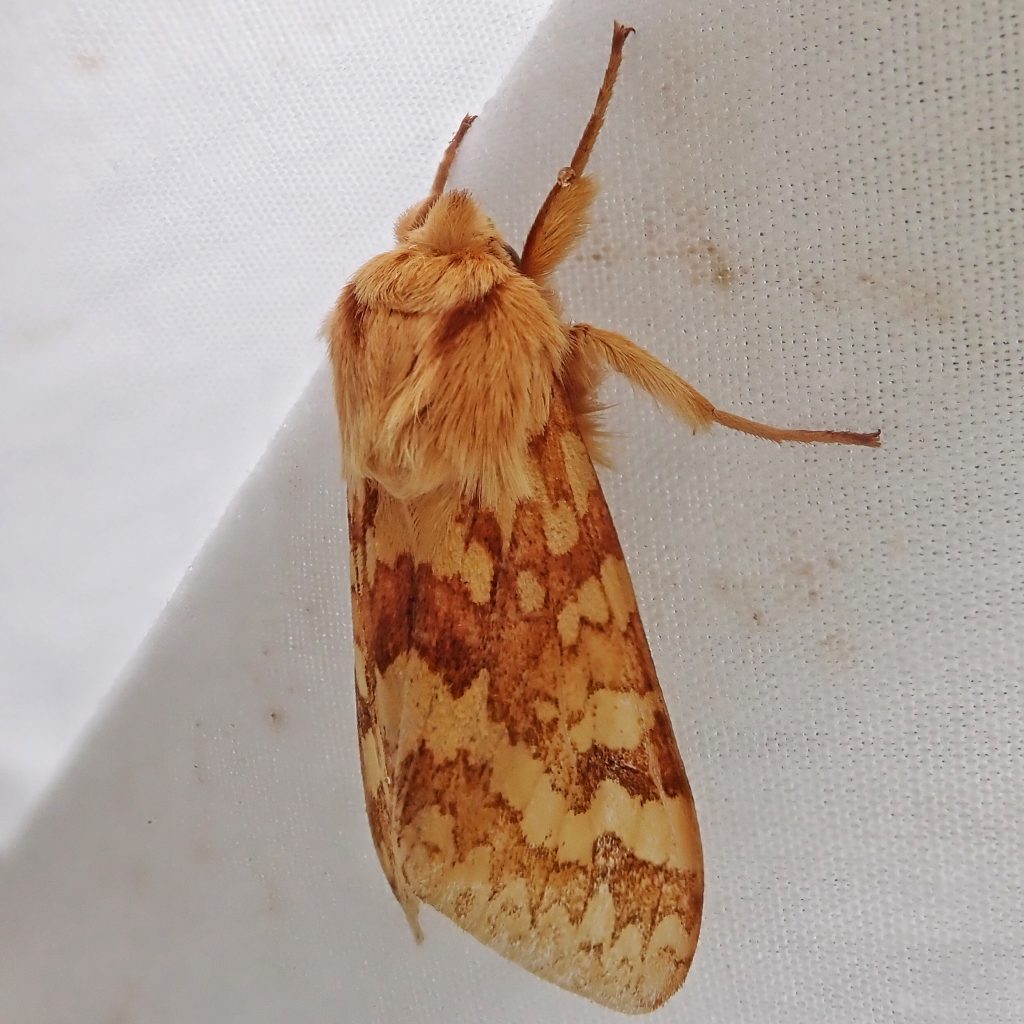
http://mothphotographersgroup.msstate.edu/species.php?hodges=8214
https://bugguide.net/node/view/5241
https://www.ncbi.nlm.nih.gov/pmc/articles/PMC4124577/
https://www.butterfliesandmoths.org/species/Lophocampa-maculata
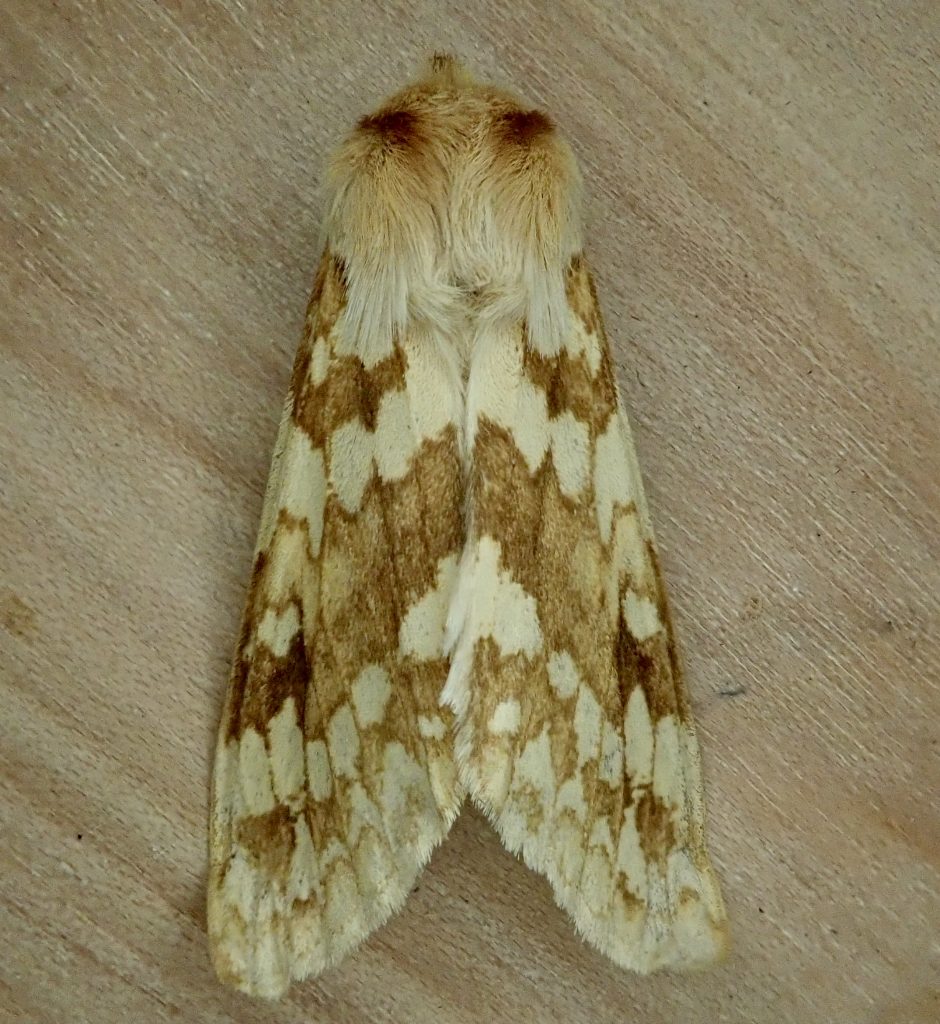
2 thoughts on “Lophocampa maculata (Spotted Tussock Moth)”